The engine cooling system is liquid (with forced circulation), sealed, with an expansion tank
The system is filled with an ethylene glycol-based liquid (antifreeze) that does not freeze at ambient temperatures up to -40 ° C
It is not recommended to fill the cooling system with water, as antifreeze contains anti-corrosion, anti-foaming and anti-scale additives
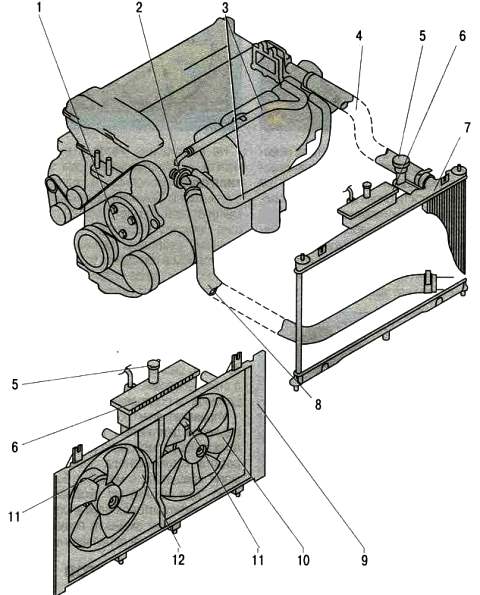
Elements of the cooling system: 1 - water pump; 2 - thermostat; 3 - hoses of a small circle of circulation; 4 - radiator outlet hose; 5 - radiator cap; 6 - expansion tank; 7 - radiator; 8 - inlet hose; 9 - casing of electric fans; 10 - impeller of the main electric fan; 11 - fan motor; 12 - impeller for additional electric fan
The engine cooling system is shown in Figure 1
In addition to the elements shown in the figure, the system includes a cast engine cooling jacket surrounding the cylinder walls in the block, combustion chambers and gas channels in the block head, and a passenger compartment heater radiator.
The circulation of fluid in the system is created by a water pump
From the pump, liquid is supplied to the engine cooling jacket, washes the combustion chamber cylinders and then enters the thermostat.
Depending on the position of the thermostat valve, fluid flows either to the water pump (at low temperature) or to the radiator (at high temperature).
The normal thermal regime of the engine is determined by the temperature of the coolant, which is automatically maintained by a thermostat in the range of 90-100 ‘C.
Radiator with a horizontal arrangement of tubes, with a tubular-tape aluminum core and plastic tanks
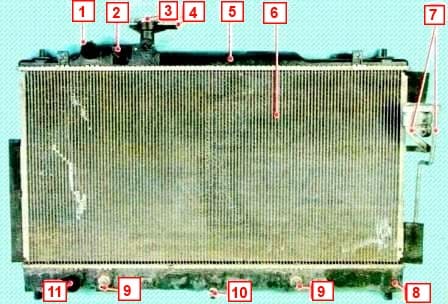
Cooling system radiator: 1 - branch pipe of the upper radiator tank; 2 - branch pipe of the return hose; 3 - radiator cap; 4 - steam outlet pipe; 5 - the upper tank of the radiator; 6 - radiator; 7 - pipelines of the condenser; 8 - lower radiator tank; 9 - fittings for automatic transmission fluid cooling hoses; 10 - drain cock; 11 - branch pipe of the lower tank
In the central part of the tank 8 there is a drain cock 10
In the tanks there are inlet 11 and outlet 1 hose pipes to the engine water jacket, pipe 4 of the steam outlet hose, pipe 2 of the return hose and fitting 9 of the automatic transmission fluid cooling hose.
There are two valves installed in the radiator cap of the engine cooling system: inlet and outlet
The exhaust valve plays a big role in ensuring optimum engine temperature.
It maintains an excess pressure of at least 0.127 MPa (1.27 kgf / cm2) in the system, increasing the temperature at which the coolant begins to boil and preventing intense vaporization
Unfortunately, if the valve is stuck in the closed position, overheating causes a significant excess of overpressure - more than 0.15 MPa (1.5 kgf / cm2), which can lead to a rupture of the radiator or failure of one from hoses.
In turn, the jamming of the valve in the open position leads to premature boiling of the coolant.
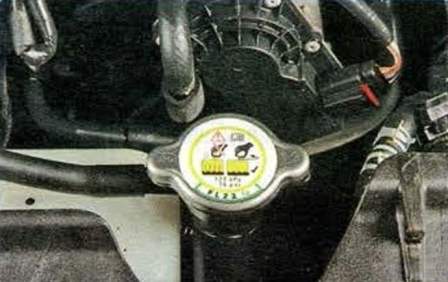
Rinse the radiator cap once a year with running water. If in doubt, replace the plug
If you remove the plug on an overheated engine and this action coincides with a thermal shock in time, then boiling of the liquid and the formation of air pockets in the cooling system will be guaranteed.
Once a year, blow out the radiator cells with a jet of compressed air (for example, from a compressor), directing the jet first towards the oncoming air flow, and then in its direction to remove dirt, insects and road debris from the surface of the radiator. So you can partially restore the efficiency of the radiator.
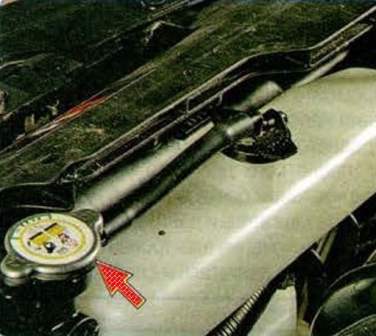
Expansion tank to serves to compensate for the changing volume of the coolant depending on its temperature. The tank is made of translucent plastic
To control the coolant level, the walls are labeled "FULL" (the maximum amount of coolant) and "LOW" (the minimum amount of coolant). From above, the expansion tank is closed with a plastic stopper.
The centrifugal type water pump provides forced circulation of liquid in the cooling system
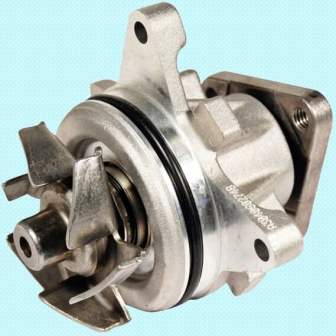
It is located on the front surface of the cylinder block and is driven by a V-ribbed belt from the crankshaft pulley
The pump has sealed bearings that do not require relubrication.
The pump cannot be repaired, therefore, in case of failure (liquid leakage or bearing damage), it is replaced as an assembly.
Thermostat maintains the normal operating temperature of the coolant and reduces engine warm-up time

The thermostat is installed in a housing fixed to the cylinder head
When the coolant temperature is below 75 ° C, the thermostat is completely closed and the liquid circulates through a small circuit, bypassing the radiator, which accelerates engine warm-up
At a temperature of about 80-84º C, the thermostat begins to open, and at 97 ° C it opens completely, circulating fluid through the radiator.
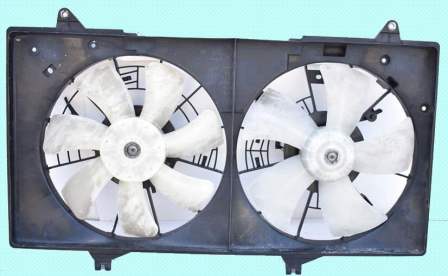
At the Mazda 6, two electric fans (main and additional) with plastic impellers (five- and seven-blade, respectively) are installed in the basic configuration, which provide air purge of the radiator at low vehicle speeds, mainly in urban areas or on mountain roads, when there is not enough airflow to cool the radiator.
To increase efficiency, the fans are installed in a plastic casing and attached to it at three points each
The casing, in turn, is attached at four points to the radiator (on top with two bolts, and on the bottom with stops inserted into the grooves of the brackets on the radiator supply tank)
The engine control unit controls the electric fans.
Depending on the intensity of the thermal regime and the algorithm of the air conditioner, the electric fans can rotate at low and high speeds
To change the speed of electric fans, the engine control unit changes their connection schemes from serial to parallel
Possible malfunctions of the cooling system and solutions
Engine overheating:
- low coolant level in expansion tank
Add coolant
- the thermostat is faulty
Replace thermostat
- the core of the radiator is clogged
Rinse the outside of the radiator core
- the radiator tubes, hoses and engine cooling jacket are clogged with scale or sludge
Flush the cooling system and fill with fresh coolant
- one or both electric fans do not turn on
Check and repair electrical circuits. Replace sensors, relay or fan assembly if necessary
- valve damage in the radiator cap
Replace the radiator cap
The engine does not warm up to operating temperature for a long time, the thermal regime is unstable during movement:
- the thermostat is faulty
Replace thermostat
The engine overheats, cold air comes out of the heater
- an excessive decrease in the coolant level due to a leak or damage to the cylinder head gasket, which causes the formation of vapor locks in the engine water jacket
Fix the coolant leak. Replace damaged cylinder head gasket
Continuous drop in coolant level in the expansion tank
- leaky radiator
Replace heatsink
- coolant leaks through pipe and hose connections
Tighten the hose clamps
- damaged water pump seal
Replace water pump
- the sealing ring of the water pump housing is damaged
Replace O-ring
- badly tightened bolts fastening goal forging the cylinder block (during parking on a cold engine, coolant leaks through the joint between the block head and the cylinder block; in addition, coolant may appear in the engine oil)
Tighten the cylinder head bolts to the correct torque or replace the cylinder head gasket
- the heater radiator is leaking
Replace heater core
Checking the hoses and connections of the cooling system
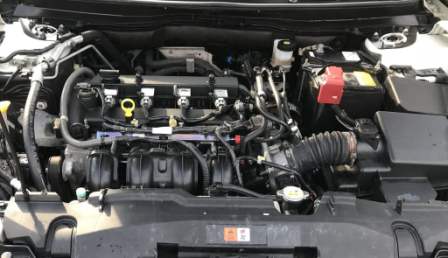
Open the hood and inspect the engine compartment
Find where the steam is coming from
When inspecting the engine, pay attention to the presence of coolant in the expansion tank
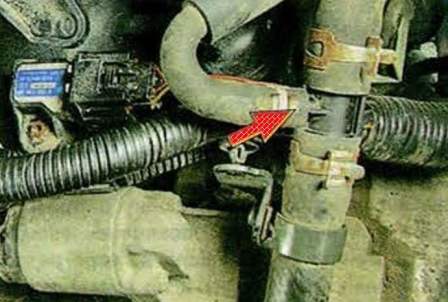
We pay attention to the integrity of the rubber hoses of the radiator, thermostat, water distribution pipes
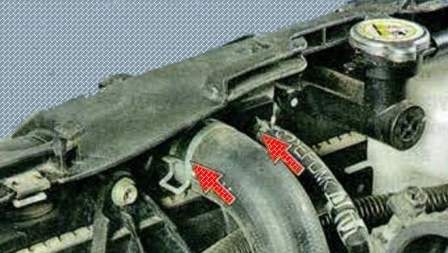
Inspecting the connections to the outlet hose radiator
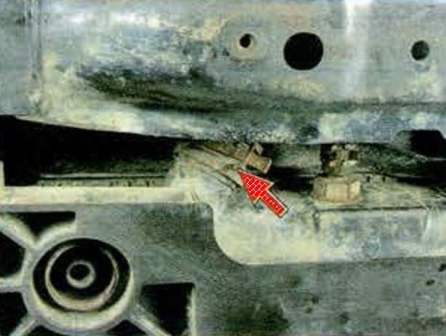
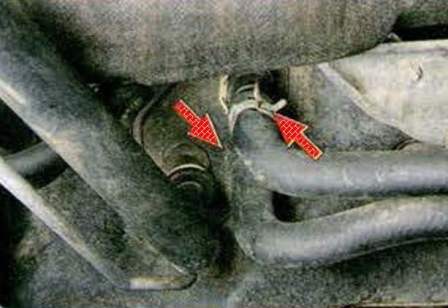
Inspecting the connection of the inlet hose
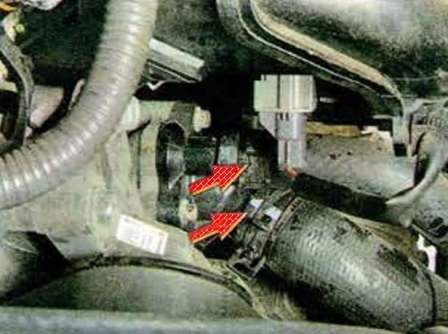
Inspecting the connection of the cooling system hoses with the pipes of the heater radiator and thermostat

Inspecting the connection of the inlet hose of the connecting tee of the engine cooling system
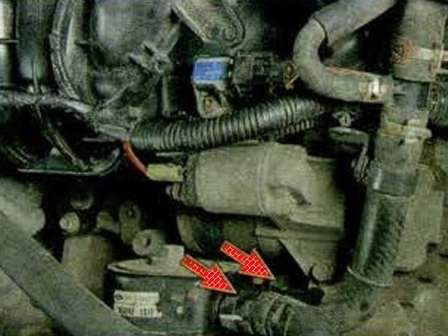
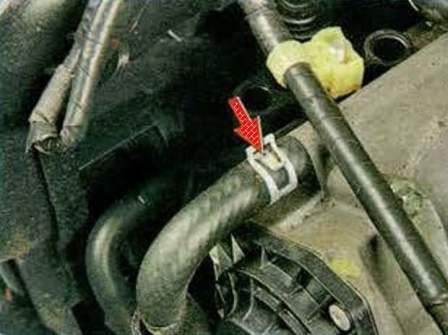
Inspecting the hose connections to the oil cooler
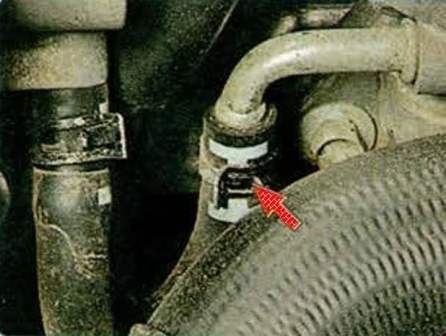
Inspecting the connection of the upper and lower heating hoses of the throttle assembly
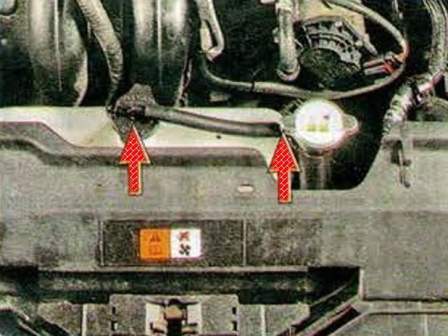
Checking the connection of the steam outlet hose to the radiator and expansion tank





